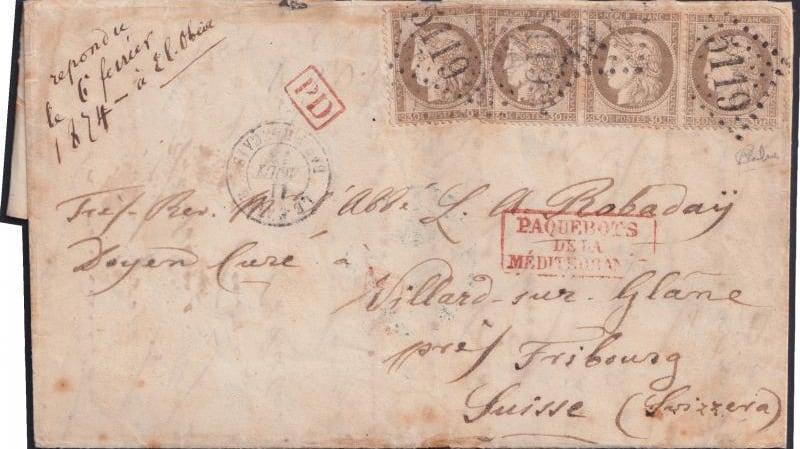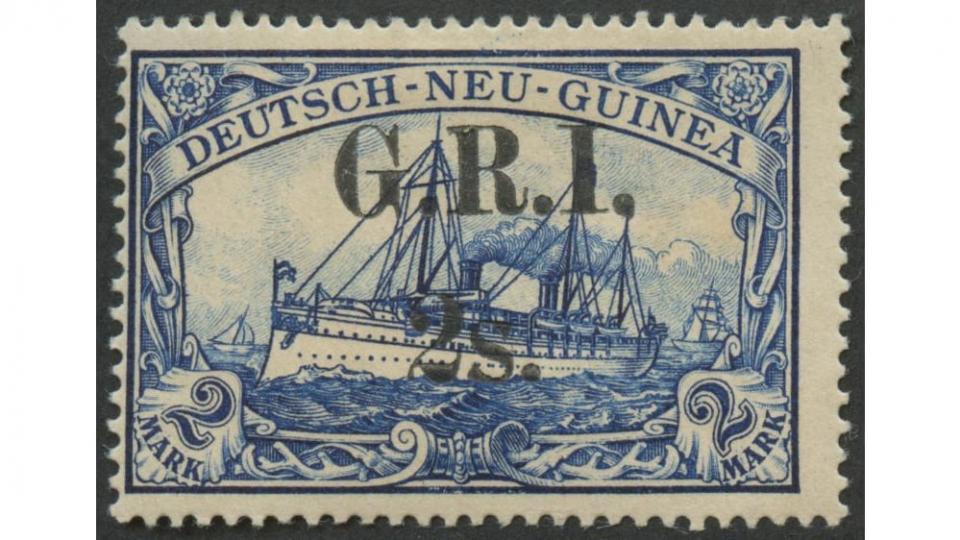Submitted by aarAdmin on Wed, 12/18/2024 - 00:00
Sydney collector John Gibson was very much in the auction limelight with his collection of 19th century Sudanese postal history ranging from early Egyptian post offices through to the tumultuous 1880s and 1890s military campaigns of the region.
The top selling exhibit from his collection at Melbourne-based Abacus Auctions December 10-13 sale was the 1852 letter cover to an Austrian noblewoman (lot 2568), recognised as one of the most outstanding of all Sudan examples, which was knocked down for $16,000 – double its catalogue estimate. All prices are exclsuive of the 20 pe cent buyers' premium.
One of only four recorded covers via the Austrian Post Office before stamps were issued in Alexandria, it contains a tightly-written six-page letter from Ignatius Knoblecher, an original Catholic missionary who ended up effectively Bishop of Sudan for the Apostolic Vicariate of Central Africa, established in 1846 in Vienna.
The missionaries arrived two years later in Khartoum where they established a boys’ school by rescuing students purchased from the local slave market.
Another of Gibson’s collection, dated July 1873 and written in French, (lot 2573) is the latest of only three stamped covers recorded from the Sudan prior to the establishment of Egyptian post offices in the region. Its sale price of $10,500 was five times the catalogue estimate.
A 1914 two-shilling blue New Guinea stamp with G.R.I. overprints, one of only three known examples, (lot 917) sold for $8500, while 1961-65 set of Western Australian railway stamps with values from 3d to one pound including 4/6d example (lot 899) staggered auction goers with its $7250 result, again five times the listed catalogue estimate.
A neatly presented collection of Australian King George V issue stamps (lot 206) sold for $7000, while a comprehensive assembly of stamps from Australian colonies and states (lot 546) sold for $6750.
Another of Gibson’s Sudan collection, an 1859 French letter to a small town on the French/Swish border (lot 2570), again sold well above estimate at $6250 and a set of late 19th century and early 20th century Chinese dragon stamps (lot 1309) brought $6000.
Of particular note was the circa 1803-1820 convict cap from the Tasmanian penal settlement of Port Arthur (lot 3489) which sold for $3800.
The cap was part of a collection of Australian convict memorabilia belonging to Australia’s leading expert of body language Allan Pease who is a key adviser on the subject to police forces, customs officials and similar authorities.










